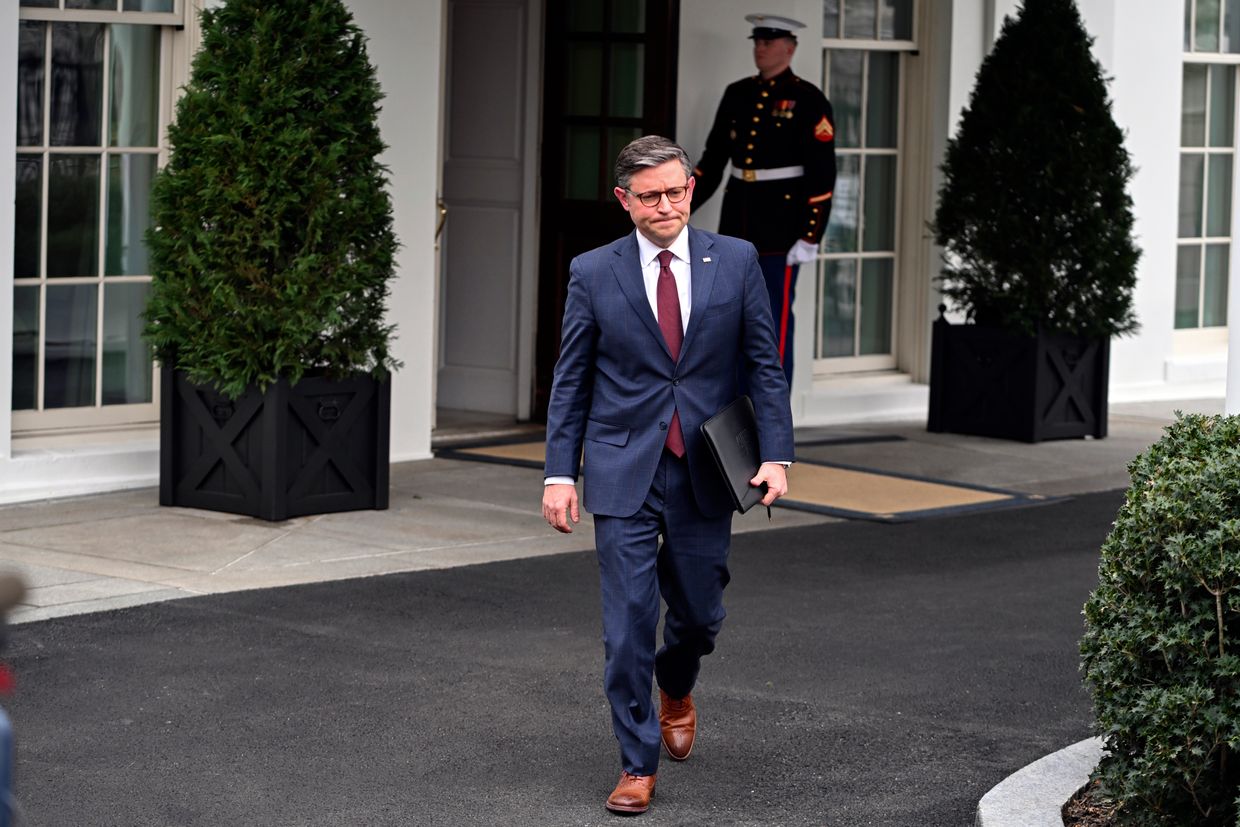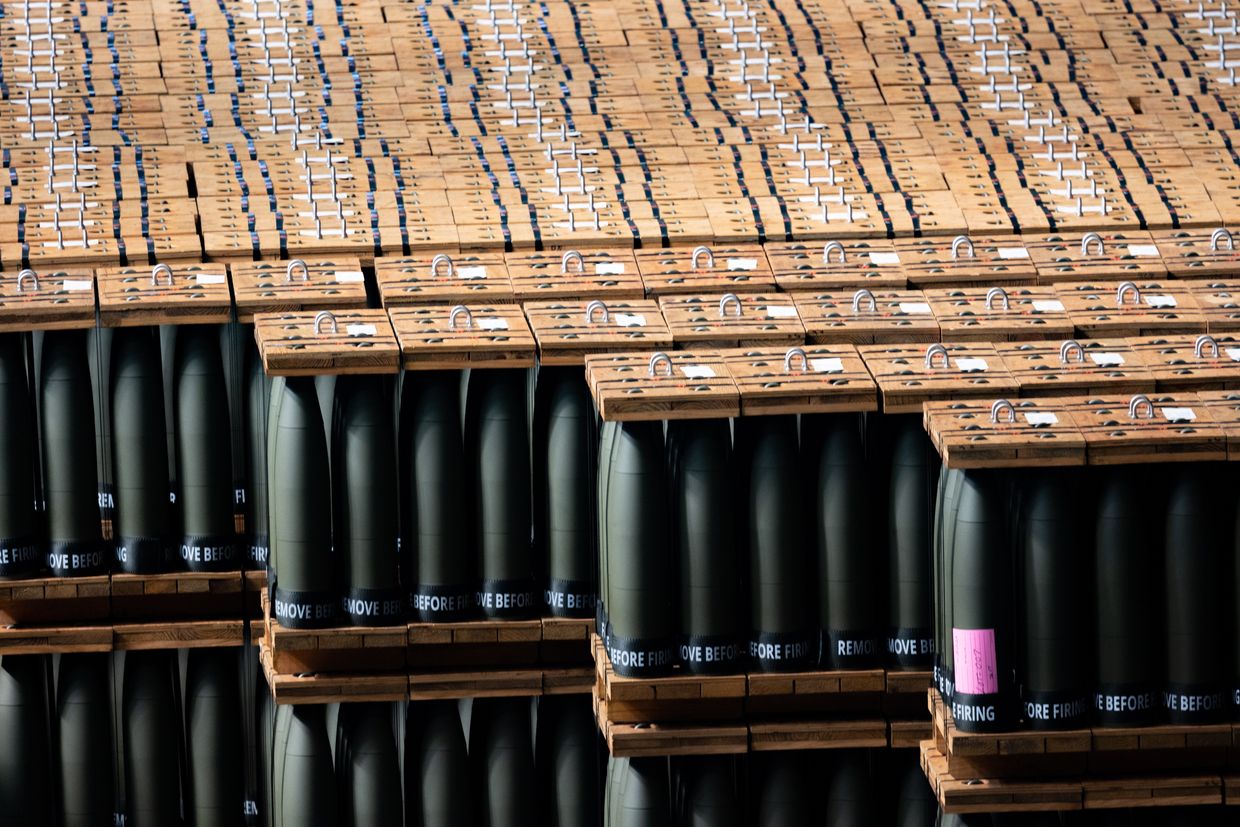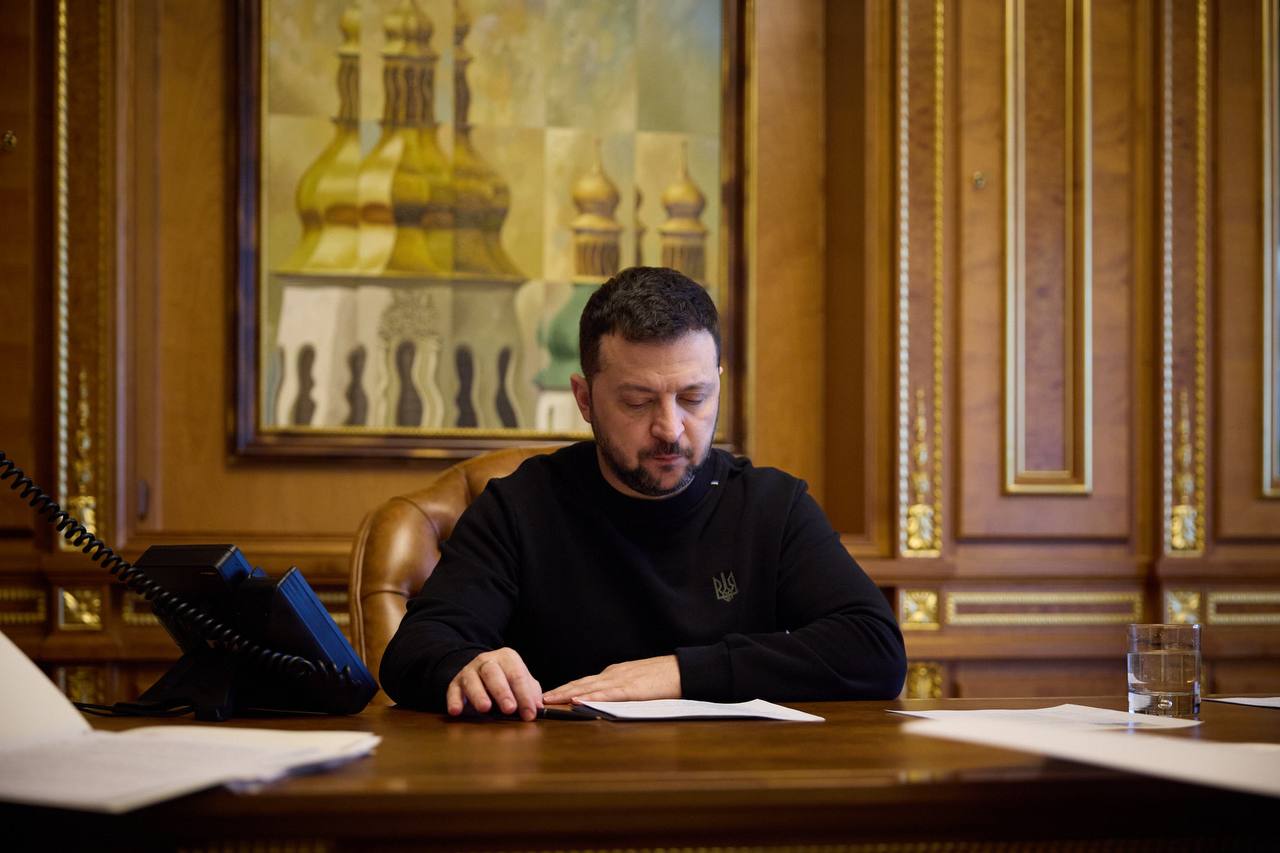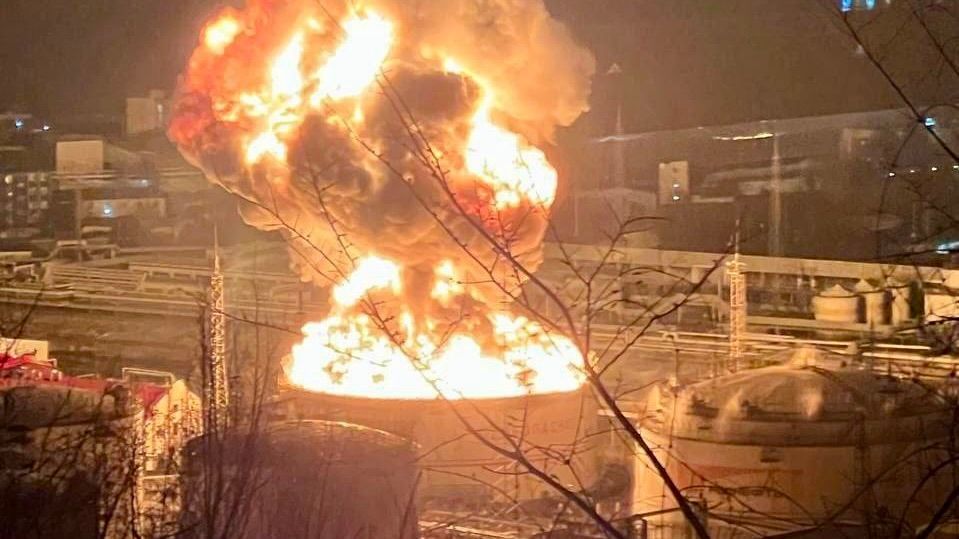After six grueling months, the U.S. House of Representatives may finally be preparing to vote on a new aid package for Ukraine.
House Speaker Mike Johnson said on April 16 that following new rounds of talks with House Republicans, he planned to advance three separate aid packages for Ukraine, Israel, Taiwan, and other U.S. allies.
A fourth bill, set to focus on domestic policies in an attempt to appease hard-right Republicans who oppose further aid to Kyiv, will be voted together with the aid bills.
Johnson told reporters following the meeting that he hoped the bills’ texts would be released on April 16 and a vote could take place as soon as this week. The speaker also said that he may look to unify the bills into one package before sending them to the Senate.

Iran's attack on Israel on April 14 has added pressure on House Speaker Mike Johnson to pass further aid after a $95 billion aid package for allies passed in the Senate in February has languished. Meanwhile, Russia has taken advantage of Ukraine’s growing battlefield ammunition shortages, taking the city of Avdiivka in February.
President Volodymyr Zelensky said last month that Ukraine needs more help ahead of what is expected to be a major Russian offensive in May or June. Ukraine will lose the war without crucial aid, he said.
The aid package to Ukraine and other U.S. partners and allies was first introduced in October 2023. At the time, the White House submitted a new foreign supplemental aid request to Congress. The proposed aid was meant for Ukraine, Israel, Taiwan, and other countries.

In response, Republican members of the House of Representatives and Senate stated that the foreign aid package could not be passed without discussions on U.S. border security and national security reform.
For months, Republicans and Democrats debated the legislation in both chambers of Congress. By December 2023, Republican members of Congress had decided to remove border security from the bill, and it sat for several weeks as U.S. elected officials went on a three-week winter recess.
The aid package was finally passed in the Senate in February 2024 with strong bipartisan support, where 70 out of 100 Senate members voted for it.
It remains unclear whether Johnson’s new strategy will manage to garner enough support to get aid to Ukraine and other countries waiting on it.
Russia's gamble
The political squabbles in passing further aid have been costly. As the House deliberates on the foreign aid package, civilians and soldiers alike continue to die in Ukraine.
Delays in the new foreign supplemental aid package have also altered the battlefield, and matters are only set to worsen in these areas if the foreign aid is delayed.
Mykhailo Gonchar, president of the Center for Global Studies, believes Russia will take a new gamble as Ukrainian forces are running critically low on ammunition.
"(The Russians) are preparing to shoot (at) Kharkiv," he said. "The use of anti-aircraft guns is becoming increasingly widespread. Russia is taking advantage" of the situation that new Ukraine aid is stalled in the House.
Given these developments, officials believe Russia is taking this into account when preparing for a new spring offensive.
As a result, discussions on the new foreign supplemental aid package in the House of Representatives have become more pressing. Supporters of Ukraine in the House and Senate have recently urged Speaker Johnson to bring the legislation to a vote.
"Ukraine has broad bipartisan support in the House of Representatives," stated Doug Klain, a policy analyst at Razom for Ukraine, a U.S.-based non-profit humanitarian aid and advocacy organization.
According to Klain, the "preferred option for members of Congress and advocates for Ukraine is that a bill be introduced into the House by the Speaker of the House."

There are other ways in which the legislation could be introduced if the bills don't make it to the House floor for a vote. One way is through a discharge petition. This process allows the House to vote on a bill, bypassing the speaker.
A simple majority within the House of Representatives is needed for the discharge petition to be successful. A simple majority is required for the motion to succeed. There are 435 members in the House, meaning only 218 members are needed for a discharge petition to work. The process, however, is very uncommon.
"One risk of forcing the discharge petition is that it could turn Republican leadership against aid for Ukraine," Klain added. "The motion would bypass the standard way of introducing legislation within the House as it goes around Speaker Johnson."
Critics of Ukraine aid argue that the United States has already sent enough money to aid Ukraine. Others have questioned the importance of the aid.
Meanwhile, a majority of the funding for the bill is set to assist with American stockpiles and secure American jobs.
Foreign aid, domestic jobs
At least 31 U.S. states are "producing weapons systems for Ukraine with the aid Congress has (previously) approved,” the Washington Post reported. Many of these states have at least two assembly lines producing weapons.
Passing further aid to Ukraine would help replenish U.S. stockpiles with weapons that the U.S. has been sending to Ukraine over the past two years.
This has ranged from High Mobility Artillery Rocket Systems (HIMARS), Army Tactical Missile Systems (ATACMS), National Advanced Surface-to-Air Missile Systems (NASAMS), and Stryker armored personnel carriers to Abrams tanks, stinger and anti-aircraft missiles, Javelins, and mortar systems.
The Associated Press reported that roughly one-third of the proposed $60 billion aid package would be used to replenish U.S. stockpiles.
Proponents of aid to Ukraine have also pointed to the fact that the bill would help job growth in the U.S.


According to the Aerospace Industries Association, the aerospace and defense industry in the United States employs nearly 2 million Americans. The industry is one of the country's largest employers.
Meanwhile, there has also been a surge in revenue for defense contractors in the U.S.
Portions of aid to Ukraine are being allocated to dozens of American states. Over thirty U.S. states across the country directly benefit from the procurement provisions. According to a chart published by Politico, payments to these states range from a few million dollars to well over a billion dollars.
States such as Oregon, New Mexico, Rhode Island, New Jersey, and Maryland will earn millions of dollars from the production of munitions and tactical vehicle procurement.
Other states, such as California, Texas, Florida, Ohio, and New York will earn well over half a billion dollars for these programs. The states that will gain the most from the Ukraine aid are Arizona, Michigan, Arkansas, and Pennsylvania. At least 71 American cities across the country will directly benefit from the passage of the new aid bill to Ukraine.

The newly proposed Ukraine assistance will also increase the industrial base and military complex in Republican-leaning states in the Midwest and South, areas where numerous members of the House of Representatives oppose the aid.
"There is a strong argument to be made that aid for Ukraine is an America-first package," argued Andrew D'Anieri, a resident fellow at the Atlantic Council's Eurasia Center.
"The bill would strengthen the U.S. industrial base and bring jobs to Americans," he added. "The Ukraine aid bill would help America develop the military capacity to deter further military aggression from China, Russia, and Iran."
Roughly one-third of the proposed new aid to Ukraine (about $20 billion of the proposed $60 billion) would be used to replenish U.S. stockpiles and defense industry employment.
Ukraine's needs
Nearly $14 billion of the proposed aid will allow the Ukraine to purchase weapons and munitions from other countries needed to arm themselves to fight off Russia’s war.
Another $15 billion will be used for "military training and intelligence sharing." To date, Ukraine has conducted dozens of training exercises with NATO to enhance its defense capabilities and modernize its military forces.
Outside of this $29 billion for Ukrainian defense, another $8 billion will go toward Ukrainian government assistance. The aid will help the Ukrainian government continue to function and conduct day-to-day operations.

Due to the war, Ukraine has been spending over 30% of its gross domestic product on military expenditures. The aid from the United States will allow the Ukrainian government to allocate resources to other government necessities and programs. Similarly, $1.6 billion of the proposed new aid bill will go toward Ukraine's private sector.
The remaining portion of the proposed $60 billion aid bill will go to assist Ukrainians who have been displaced by the war.
To date, one-fourth of Ukraine's total population has become displaced due to Russia's unprovoked full-scale invasion. Millions have fled the Russian-occupied territories in southern and eastern Ukraine.














